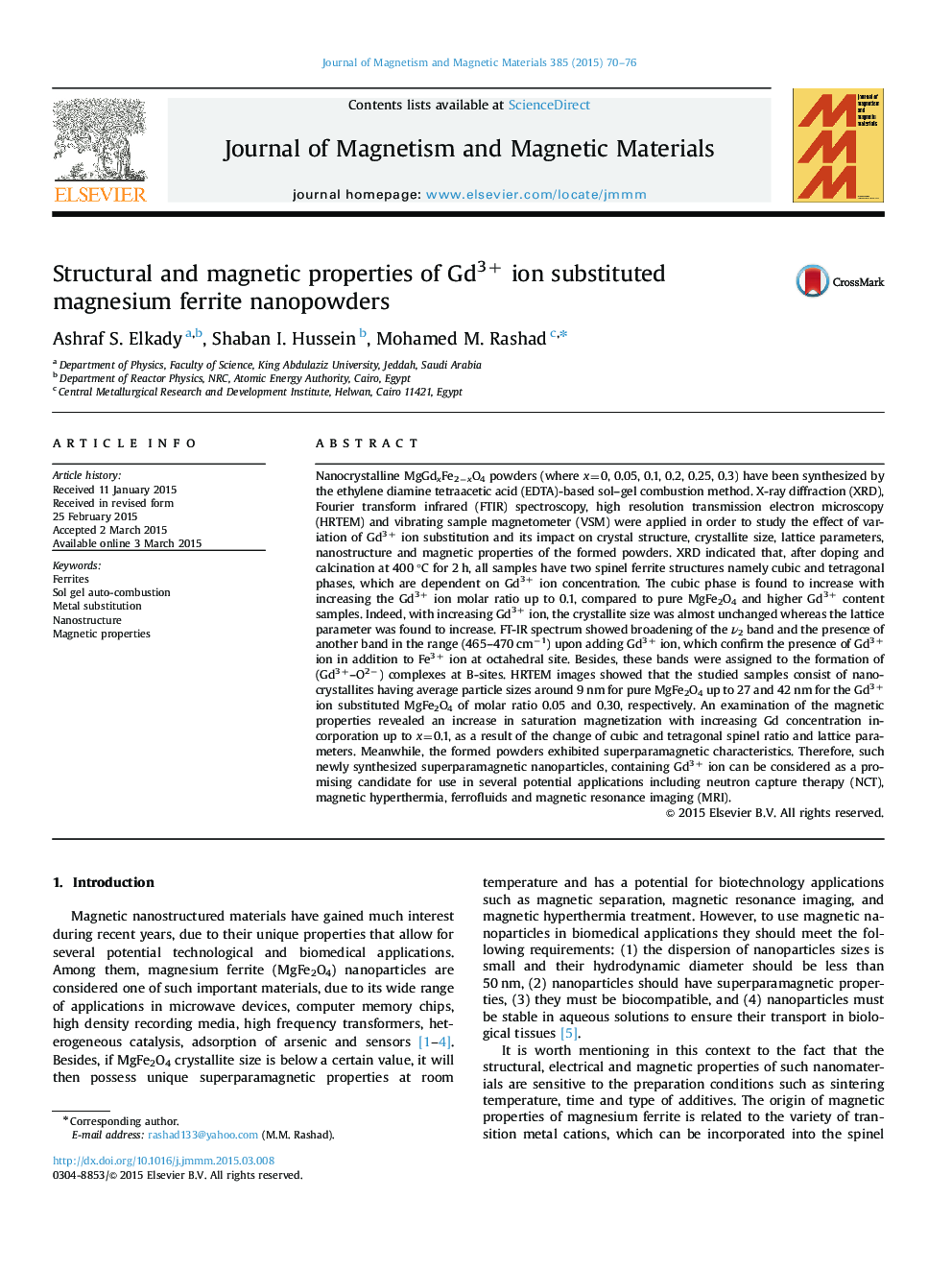| Article ID | Journal | Published Year | Pages | File Type |
|---|---|---|---|---|
| 1799120 | Journal of Magnetism and Magnetic Materials | 2015 | 7 Pages |
•MgGdxFe2−xO4 nanoparticles are synthesized at low temperature 400 °C.•The microstructure is dependent on Gd3+ ion concentration.•The spinel cubic structure increases with Gd3+ ion up to 10%.•The nanoparticles exhibited superparamagnetic behavior at room temperature.•The anomalous behavior of Ms is due to the different magnetic moment of Fe and Gd.
Nanocrystalline MgGdxFe2−xO4 powders (where x=0, 0.05, 0.1, 0.2, 0.25, 0.3) have been synthesized by the ethylene diamine tetraacetic acid (EDTA)-based sol–gel combustion method. X-ray diffraction (XRD), Fourier transform infrared (FTIR) spectroscopy, high resolution transmission electron microscopy (HRTEM) and vibrating sample magnetometer (VSM) were applied in order to study the effect of variation of Gd3+ ion substitution and its impact on crystal structure, crystallite size, lattice parameters, nanostructure and magnetic properties of the formed powders. XRD indicated that, after doping and calcination at 400 °C for 2 h, all samples have two spinel ferrite structures namely cubic and tetragonal phases, which are dependent on Gd3+ ion concentration. The cubic phase is found to increase with increasing the Gd3+ ion molar ratio up to 0.1, compared to pure MgFe2O4 and higher Gd3+ content samples. Indeed, with increasing Gd3+ ion, the crystallite size was almost unchanged whereas the lattice parameter was found to increase. FT-IR spectrum showed broadening of the ν2 band and the presence of another band in the range (465–470 cm−1) upon adding Gd3+ ion, which confirm the presence of Gd3+ ion in addition to Fe3+ ion at octahedral site. Besides, these bands were assigned to the formation of (Gd3+–O2−) complexes at B-sites. HRTEM images showed that the studied samples consist of nanocrystallites having average particle sizes around 9 nm for pure MgFe2O4 up to 27 and 42 nm for the Gd3+ ion substituted MgFe2O4 of molar ratio 0.05 and 0.30, respectively. An examination of the magnetic properties revealed an increase in saturation magnetization with increasing Gd concentration incorporation up to x=0.1, as a result of the change of cubic and tetragonal spinel ratio and lattice parameters. Meanwhile, the formed powders exhibited superparamagnetic characteristics. Therefore, such newly synthesized superparamagnetic nanoparticles, containing Gd3+ ion can be considered as a promising candidate for use in several potential applications including neutron capture therapy (NCT), magnetic hyperthermia, ferrofluids and magnetic resonance imaging (MRI).
